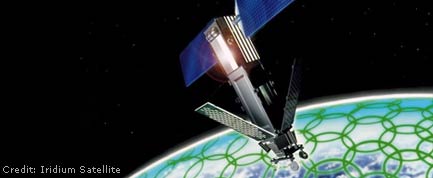Debris From Satellite Crash Possibly Fell Over Kentucky, Texas

This story was updated at 5:46 p.m. EST.
The fallingremains of two satellites obliterated in a devastating space collision last weekmay be behind weekend reports of fireballs spotted over parts of Texas andKentucky, local media and weather officials said Sunday.
Earliertoday, residents across parts of central Texas reported numerous sightings of abright fireball streaking across the daytime sky, according to several accountsby local television stations and newspapers. The Federal Aviation Authorities(FAA) issued an advisory to aircraft pilots on Saturday alerting them of potentialhazards from re-entering debris from the in-space collisionof two satellites last Tuesday.
Texas?s KBTXNews 10 station reported numerous sightings from residents who spotted the fireballsor heard rumbling sounds earlier on Sunday. The Waco Tribune-Heraldnewspaper cited reports from residents who described hearing an explosion-like soundthat rattled windows and shook houses. In both reports, FAA officialsattributed the sightings as stemming from re-entering debris from the satellitecollision, though none of the debris appeared to fall all the way to theground.
Last week, thedefunct Russian military satellite Cosmos 2251 slammed into the active U.S.communications satellite Iridium 33 as they flew about 490 miles (790 km) aboveSiberia. The collision destroyed bothsatellites, creating two large clouds of debris made up of hundreds ofindividual pieces, some of which may remain inorbit for up to 10,000 years, Russian mission experts have said.
Officialsat the U.S. Strategic Command, which oversees the U.S. Defense Department?sSpace Surveillance Network that continuously tracks the more than 18,000 separatepieces of space debris in orbit today, said they did receive a report of the Texassightings on Sunday.
U.S. AirForce Lt. Col. Terry Plumb, a spokesperson for the U.S. Strategic Command, toldSPACE.com that the center received a 911 call from just outside Houston, Texas, butwas awaiting confirmation that it was actually caused by debris from theIridium 33-Cosmos 2251 satellite crash.
Get the Space.com Newsletter
Breaking space news, the latest updates on rocket launches, skywatching events and more!
?We haven?treceived any official reports here yet,? Plumb said.
Late Friday,similar sky sightings were also received by National Weather Service (NWS) centersin parts of Kentucky. Like Sunday?s reports, the descriptions of explosions inthe sky and earthquake-like rumbles were attributed to the likely re-entry of debrisfrom the satellite collision, NWS officials in Jackson, Kentucky said in astatement.
?TheFederal Aviation Administration has reported to local law enforcement that theseevents are being caused by falling satellite debris,? the announcement stated. ?Thesepieces of debris have been causing sonic booms ? resulting in the vibrationsbeing felt by some residents ? as well as flashes of light across the sky.?
A phonecall to the FAA?s Southern Region branch, which includes Kentucky and othersouthern and eastern states, was not immediately returned Sunday.
Brian Schoettmer,a meteorologist with the Jackson NWS office, told SPACE.com thatresidents across several counties in eastern central Kentucky called theirlocal NWS branches to report the odd sky sightings.
?This was apretty rare call,? Schoettmer said, adding that the FAA told his office thatthe reports may have been caused by falling debris from the satellite crash. ?Reallyrare, actually.?
NASAscientists are trackingthe debris from last week?s satellite crash to determine the risk it poses tothe many science and communications satellites in Earth orbit, including theHubble Space Telescope. The debris also slightly raised the chances of debris damagingthe International Space Station, which orbits the Earth at an altitude ofabout 220 miles (354 km) - much lower than the satellite crash site - but the increasein risk is relatively minor, NASA officials have said.
- Video: How the Satellite Crash Happened
- Debris From Space Collision Poses Threat to Other Satellites
- Space Station Astronauts Informed of Satellite Crash
Join our Space Forums to keep talking space on the latest missions, night sky and more! And if you have a news tip, correction or comment, let us know at: community@space.com.

Tariq is the Editor-in-Chief of Space.com and joined the team in 2001, first as an intern and staff writer, and later as an editor. He covers human spaceflight, exploration and space science, as well as skywatching and entertainment. He became Space.com's Managing Editor in 2009 and Editor-in-Chief in 2019. Before joining Space.com, Tariq was a staff reporter for The Los Angeles Times covering education and city beats in La Habra, Fullerton and Huntington Beach. In October 2022, Tariq received the Harry Kolcum Award for excellence in space reporting from the National Space Club Florida Committee. He is also an Eagle Scout (yes, he has the Space Exploration merit badge) and went to Space Camp four times as a kid and a fifth time as an adult. He has journalism degrees from the University of Southern California and New York University. You can find Tariq at Space.com and as the co-host to the This Week In Space podcast with space historian Rod Pyle on the TWiT network. To see his latest project, you can follow Tariq on Twitter @tariqjmalik.









